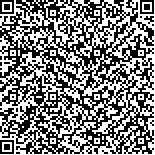|
|
|
| |
|
|
| 本文已被:浏览 854次 下载 0次 |

码上扫一扫! |
|
|
| 基于稳定同位素的枸杞岛海藻场鱼类群落营养结构特征 |
|
薛彬1, 李磊2, 蒋丽勤3, 张佳奇3, 戴乾1, 王君3
|
|
1.浙江省海洋水产研究所 农业农村部重点渔场渔业资源科学观测实验站 浙江省海洋渔业资源可持续利用技术研究重点实验室 浙江舟山 316021;2.中国水产科学研究院东海水产研究所 农业农村部海洋与河口渔业资源及生态重点开放实验室 上海 200090;3.浙江海洋大学 浙江舟山 316022
|
|
| 摘要: |
| 为了阐明枸杞岛近岸海域食物网结构, 为岛礁近岸海藻场鱼类群落结构变化提供研究依据, 应用碳、氮稳定同位素技术方法, 分析评估了舟山枸杞岛近岸海藻场主要鱼类群落的营养结构特征及其季节变化。结果表明, 海藻场茂盛期(春、夏季)主要鱼类的δ13C值范围为-20.4‰~-12.8‰, 均值为-16.1‰, 其δ15N值范围为4.1‰~10.4‰, 均值为8.4‰; 海藻场衰退期(秋、冬季)主要鱼类的δ13C值范围为-17.9‰~-14.4‰, 均值为-16.1‰, δ15N值范围为7.6‰~12.9‰, 均值为9.7‰。钩虾和麦秆虫对褐菖鲉(Sebastiscus marmoratus)、大泷六线鱼(Hexagrammos otakii)和斑头鱼(Agrammus agrammus)等海藻场定居种类的食源贡献率最大, 浮游动物对黄姑鱼(Nibea albiflora)和皮氏叫姑鱼(Johnius belengerii)的等非藻场定居种类食源贡献最大; 应用SIBER模型计算显示枸杞岛海藻场茂盛期的主要鱼类群落生态位空间、核心生态位空间、基础食物来源、营养多样性的值均大于衰退期。不同时期的鱼类营养结构存在差异, 茂盛期位于多边形顶点的种类分别为赤鼻棱鳀、青鳞小沙丁、丝背细鳞鲀和黄姑鱼; 而衰退期的种类为赤鼻棱鳀、棘头梅童鱼、黑鲷、斑鳍天竺鲷、红鳍天竺鲷、红鳍东方鲀和大泷六线鱼。研究表明海藻场对主要鱼类的碳源具有显著影响, 海藻场茂盛期支撑了更高的生物多样性、食源多样性和群落营养结构。 |
| 关键词: 枸杞岛 海藻场 主要鱼类 营养结构 稳定同位素 |
| DOI:10.11693/hyhz20231200279 |
| 分类号:S917.4;S931.1 |
| 基金项目:浙江省公益技术应用研究项目,LGN21C190005号;浙江省重点研发计划项目,2019C02056号。 |
|
| NUTRIENT STRUCTURE CHARACTERISTICS OF FISH COMMUNITY IN SEAWEED BEDS OF GOUQI ISLAND, ZHOUSHAN BASED ON STABLE ISOTOPE ANALYSIS |
|
XUE Bin1, LI Lei2, JIANG Li-Qin3, ZHANG Jia-Qi3, DAI Qian1, WANG Jun3
|
|
1.Zhejiang Marine Fisheries Research Institute, Scientific Observing and Experimental Station of Fishery Resources for Key Fishery Grounds, Ministry of Agriculture and Rural Affairs, Zhejiang Province Key Laboratory for Technology Research on Sustainable Utilization of Marine Fishery Resources, Zhoushan 316021, China;2.East China Sea Fisheries Research Institute, Chinese Academy of Fishery Sciences, Key Laboratory of Marine and Estuarine Fisheries Resources and Ecology, Ministry of Agriculture and Rural Affairs, Shanghai 200090, China;3.Zhejiang Ocean University, Zhoushan 316022, China
|
| Abstract: |
| In order to clarify the nutritional structure of fish communities in the coastal seaweed beds of Gouqi Island, Zhoushan, China, the δ13C and δ15N values of the fish community samples were measured using stable carbon and nitrogen isotope techniques. The contribution rate of potential food sources to various consumers in different seasons were calculated based on Isosource mixture model and seasonal variation of nutritional structure of fish communities were analyzed accordingly. Results illustrating that during flourishing period of the seaweed beds, δ13C values of the fish in the coastal waters of Gouqi Island ranged from -20.4‰ ~ -12.8‰, with an average of -16.1‰, and the δ15N values ranged from 4.1‰ to 10.4‰, with an average of 8.4‰. However, during the decline period, the δ13C values ranged from -17.9‰ to -14.4‰, with an average of -16.1‰, and the δ15N values ranged from 7.6‰ to 12.9‰, with an average of 9.7‰. The high trophic fish (such as juvenile black seabream) fed more on fish and shrimps. The most contribution rate of food sources for Scorpaenidae (such as juvenile Sebastiscus marmoratus and Agrammus agrammus) were from gammarid and Caprella acanthogaster; Zooplankton provided main food sources for Clupeidae fishes (such as Thrissa kammalensis and Collichthys lucidus and Pseudosciaena polyactis). Five quantitative indexes were calculated by Siber model, whose results indicates the values of niche space, core niche space, basic food source and nutrient diversity of common fish communities in flourishing period were higher than those in declining period. The algal field in flourishing period supported a higher biodiversity and food diversity of fish was greater. The nutrient length of the two seasons were equal and common fish had relatively stable food net structure and nutritional diversity level. |
| Key words: Gouqi island seaweed beds common fish nutritional structure stable isotope |
|
|
|
|
|
|
